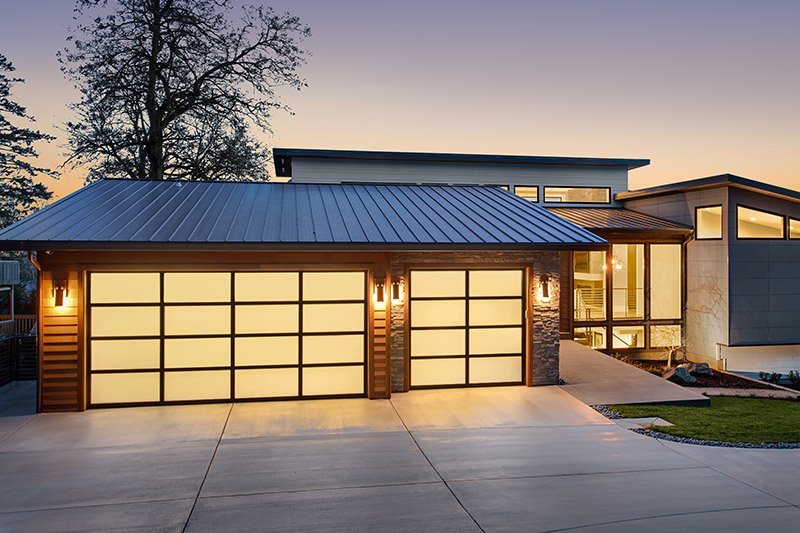Do you need to put on your heaviest winter coat before you walk into the garage? An ice-cold garage might seem inevitable, but it’s actually a sign of an efficiency problem. Proper garage door insulation—with the appropriate materials for your environment—can lead to a more energy efficient home in no time.
Start by understanding insulation
We already talked about insulation being a big part of a winter-ready garage. But do you fully understand your insulation options? Things like R-value, U-value, and polyurethane are essential when choosing the right door.
R-value versus U-value
A garage door’s R-value is the “measurement of a material’s resistance to heat flow.” A high R-value indicates a well-insulated door that’s better at stopping the flow of heat out of your house. In comparison, U-value measures the rate of heat transfer. In this case, the lower the value the better, as a low value means the heat escapes slower.
Many of the manufactured doors we offer, both commercial and residential, have high R-values and low U-values. Such options include the Wayne Dalton 9700 Insulated Steel Carriage House Garage Door with an R-value of 10. Or the CHI 2717 Sterling with an R-value of 15.07 and two-inch thick two-sided sections.
Foamed-in-place polyurethane insulation
If you look through our manufactured door options, you’ll see the term ‘foamed-in-place polyurethane insulation’ crop up a lot. This type of insulation is “injected in between the door’s steel layers, expanding to fill all of the nooks and crannies of the door.” The process also contributes to a stronger door that’s less susceptible to dents.
The materials (and windows) you choose matter
When it comes to garage door materials, you have a lot of options. But not all of them are equally efficient. On its own, steel is not very efficient, but “is a good choice when combined with an internal layer of polyurethane insulation.” One example of this is our Wayne Dalton 6600 Steel Carriage House Garage Door. If you prefer the look of a wooden garage door, you can likewise pair wood or composite wood with steel and polyurethane.
While great for curb appeal, keep in mind that windows can be a source of energy loss. So if you opt for a full-view door like the Wayne Dalton 8450 Frameless Glass Garage Door, make sure it’s compensating for the energy loss with joint seals and reinforcing pins.
And don’t forget to seal the cracks!
When going through your garage and inspecting your door, make sure to look for cracks or areas air can escape. Problem areas include the bottom of a garage door where the seal can become worn over time. Or if your weatherstripping has seen one too many winters. In general, if you can feel a draft coming in, hot air can escape out.
Get started today
An energy efficient home starts with your garage door. By choosing the right insulation and materials, and sealing the cracks, you can save money on your energy bill (and forgo the need for winter coats in your garage). Contact our team to get started on your new door!
